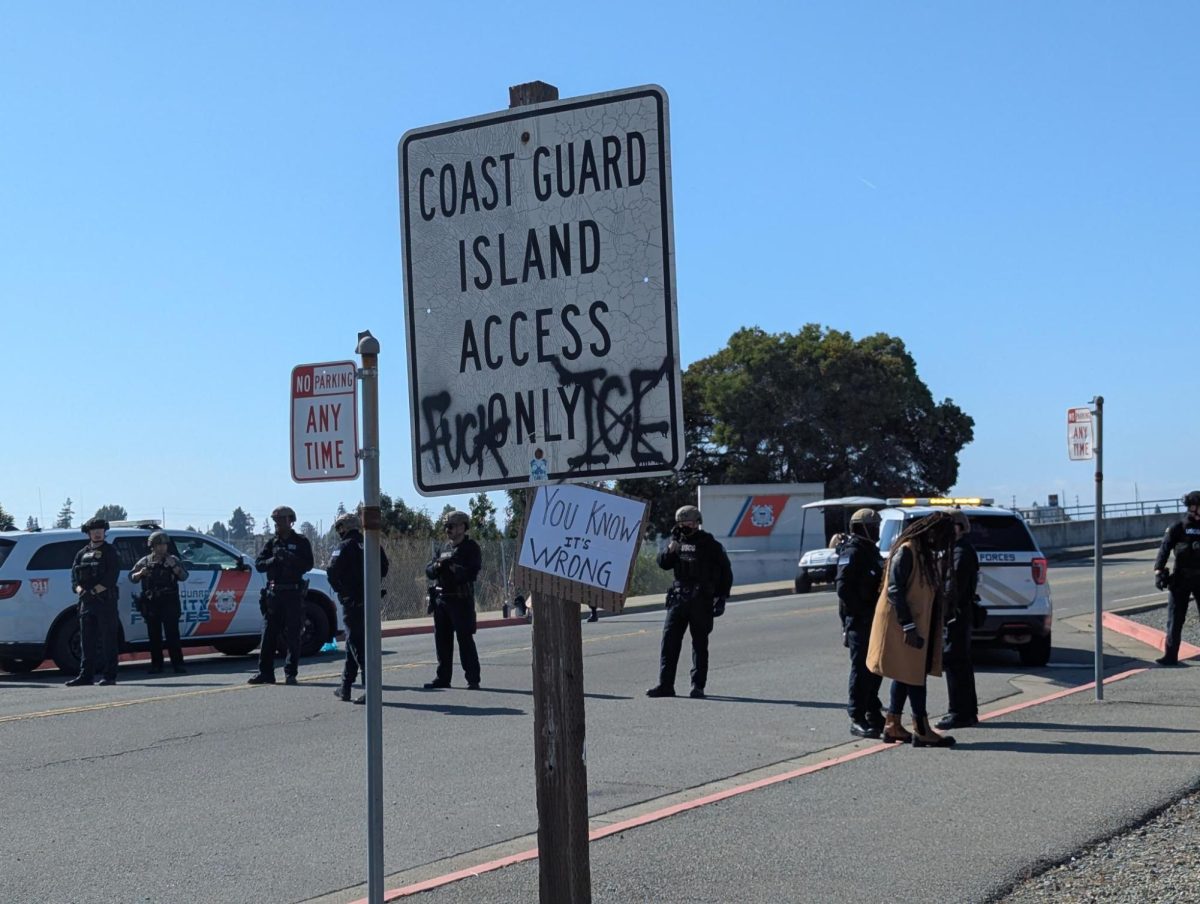On the evening of Oct. 21, two female Laney College students were robbed at gunpoint, just yards away from the college’s A building. But it wasn’t until almost two weeks later that the Laney community found out.
The two students were not hurt, though they were forced to surrender their cell phones and personal items from their backpacks to the armed robber.
When crimes like this happen, colleges are required by law to warn their communities about the incident and suspects involved as soon as possible. That way, students, faculty, and staff can be on the lookout for the suspects and be extra careful to protect themselves, especially in the evenings.
In this case, none of this happened. On Nov. 2, postings around campus suddenly appeared, describing the crime and the suspects, but with no explanation of why it had taken three weeks for the campus to be alerted. The postings were signed by Lieutenant E. Craft of the Peralta Police Services.
Technician D.L. Wiggins of the Peralta Police Services reported that their force hadn’t heard about the robbery until two days after it happened.
“We didn’t have any information,” Wiggins said. “All we heard was it was a robbery, that was it. We had no information of where or who.
“The problem with this is we have to get the report from OPD [Oakland Police Department] and it doesn’t just come automatically to us. We can’t put the information out if we don’t have anything.”
The Peralta Police Services didn’t receive the detailed report until long after the incident, at which point the posted alerts went up.
According to Wiggins, if a student is a victim of a crime off-campus, “we have to track you down, get the report from OPD, and OPD: they’re not going to rush [the report],” she said. “And if there’s nothing in this system… we have to wait for them.”
One potential solution would be to send a simple cell phone alert to students, a common practice at many schools across the nation. This doesn’t require specific details — but it can save lives.
“It probably would [help],” Wiggins said, “but it’s not something we can implement without getting approval and that’s something that the school has to do. We are under contract with the district, and we have to go through the district before we do anything.

“It’s about what they want; we can’t just go out and do X,Y, or Z without getting approval.”
Yet the lagtime between an incident and its alert can mean everything when it comes to student safety.
When asked about more serious incidents, Wiggins said: “If someone gets murdered, of course, OPD probably will contact us, but the thing is it’s all about protocol: we can’t just release information to the public without knowing what’s going on.”
The use of the word “probably” should raise eyebrows.
After all, the district and its employees are the ones who are being paid to keep the Laney community protected.
It doesn’t make sense to put the responsibility on students and faculty members to advocate for the kinds of practices — like cell phone alerts, improved safety resources, and timely crime reports — that will keep them safe.
“Funding, money — everything comes from the district,” Wiggins said.
“It’s not just coming from us. There are certain things we can and cannot do because our hands are tied.”
But on top of endangering the Laney community, the delay is a clear violation of the Jeanne Clery Act, which states the reports must “be provided to students and employees in a manner that is timely… and that will aid in the prevention of similar occurrences.”
Jeanne Clery’s story tells us why. Clery was a 19-year-old student at Pennsylvania’s Lehigh University in 1986 when she was raped and murdered. The school had recorded 38 violent crimes over the preceding three years, but failed to inform students about the danger present on campus.
In 1990, the act carrying her name passed, with strict punishments for colleges that violated the act.
These violations can mean tens of thousands of dollars in civil penalties.
In 2008, Eastern Michigan University was fined $357,000 under the Clery Act, for trying to cover up the murder and rape of Laura Dickinson, a 22-year-old student at the school.
Violations can also lead to colleges having their federal student financial aid programs suspended.
This makes it even more important for the college to release campus crime alerts as quickly as possible, in addition to what should be their top priority: keeping the Laney community safe.
























